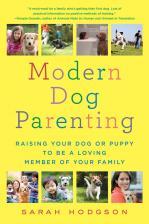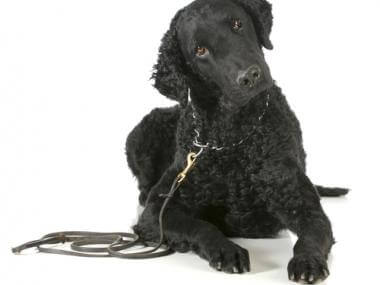Signs of Dog Aggression
Canine aggression is frightening to witness. Angry, out-of-control dogs are unpredictably dangerous. Dogs do not, however, become aggressive overnight. There are always signs—sometimes subtle—of a dog’s growing use of aggression to control his environment. Loving dog owners often miss the cues until the situation becomes explosive.
Dog mouths are the equivalent of human hands. Happy people use their hands to pat a head or tickle a chin. Similarly, contented canines nuzzle and lick to convey affection or curiosity. In both species, however, some use these instruments to communicate in harmful ways, ranging from annoyingly bossy to dangerously aggressive ones.
Buy Now

Dogs act aggressively when they are uncomfortable with a situation, and may growl to indicate their fear and frustration.
If your dog is growling at you, see if you can understand why. Is he growling when you interrupt his feeding, napping, or during a chewing frenzy? Here, his growls are saying, “I want to be left alone.” The next time the situation arises, offer him a treat as you approach to show him that you come in peace. Alternatively, is your dog growling while playing? As with kids, when dogs play, they express a lot of emotion, and your dog may simply be yapping playfully.
In interpreting your dog’s intentions, consider what else your dog is doing while growling. Dogs who growl and stare directly at their trigger are showing more assertiveness than dogs who growl and withdraw.
The trick is in the parenting: good dog and puppy parents help condition their “children” to the stressor, and then teach their “child” coping skills.
Dogs bite when their fear or frustration has become overwhelming, especially if they aren’t taught alternative ways to soothe themselves. Consider the dog who is held against his will, and, though growling, is still forced to greet a stranger, or the puppy who gets whacked repetitively for growling over a bone. In neither case is the dog respected or taught how to better manage the situation.
My clients are often confused as to why their dog is only aggressive sometimes. This is normal. The situations that trigger aggression are predictable and routine, and a dog may only express aggression in these situations.
Signs that your dog may be developing aggressive tendencies include:
- Overzealous, pushy greetings of friends or strangers
- Exaggerated, fearful reactions to new people and stimuli
- A pronounced and unyielding demand for affection
- A prolonged stare, used in an attempt to control unpredictable or wild family members or situations
- Raised hackles
- Growling
- Bared teeth
- An arched body
- A stiff walk
- A tail lifted over the back or under the legs
- Rapid tail wagging, indicating panic if the tail is tucked low, or imminent attack if raised high
- Slow sweep tail wagging, showing that a dog is analyzing the situation
- Ears pricked forward ears or lowered back
Does exhibiting these signs make your dog mean? No. A dog who displays assertive or self-activated behavior is simply trying to manage his environment. If you don’t teach your dog coping skills, he will act out. Like children, dogs benefit from compassionate, clear, and consistent instruction. Don’t let your dog become the sadly misunderstood playground bully—take steps to curb and redirect unwanted behaviors at once.
A behavior modification program can help you manage, control, and save your relationship with an overly aggressive dog. Find a skilled trainer or behaviorist in your area, or feel free to set up a Skype session with me.

Having trouble communicating with your dog or puppy? Sarah Hodgson, aka the Happy Dog Mom, is here to help. She’s written multiple best-selling books on dog training, and her next book, Modern Dog Parenting, will be out Fall 2016. You can reach her at sarah@whendogstalk.com or visit her website whendogstalk.com.





